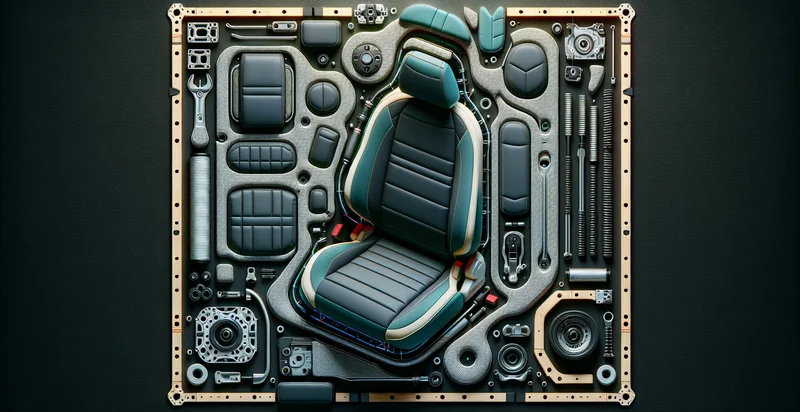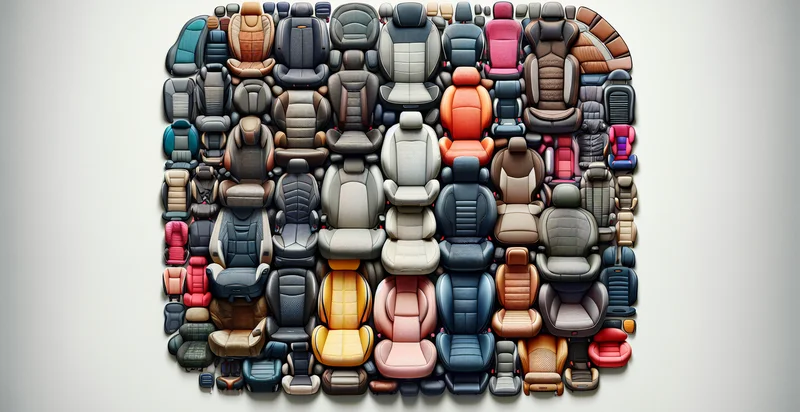Identify what material a car seat is made from
using AI
Below is a free classifier to identify what material a car seat is made from. Just upload your image, and our AI will predict what material a car seat is made from - in just seconds.

Contact us for API access
Or, use Nyckel to build highly-accurate custom classifiers in just minutes. No PhD required.
Get started
import nyckel
credentials = nyckel.Credentials("YOUR_CLIENT_ID", "YOUR_CLIENT_SECRET")
nyckel.invoke("what-material-a-car-seat-is-made-from", "your_image_url", credentials)
fetch('https://www.nyckel.com/v1/functions/what-material-a-car-seat-is-made-from/invoke', {
method: 'POST',
headers: {
'Authorization': 'Bearer ' + 'YOUR_BEARER_TOKEN',
'Content-Type': 'application/json',
},
body: JSON.stringify(
{"data": "your_image_url"}
)
})
.then(response => response.json())
.then(data => console.log(data));
curl -X POST \
-H "Content-Type: application/json" \
-H "Authorization: Bearer YOUR_BEARER_TOKEN" \
-d '{"data": "your_image_url"}' \
https://www.nyckel.com/v1/functions/what-material-a-car-seat-is-made-from/invoke
How this classifier works
To start, upload your image. Our AI tool will then predict what material a car seat is made from.
This pretrained image model uses a Nyckel-created dataset and has 20 labels, including Canvas, Cordura, Denim, Fabric, Faux Leather, Leather, Linen, Mesh, Microfiber and Neoprene.
We'll also show a confidence score (the higher the number, the more confident the AI model is around what material a car seat is made from).
Whether you're just curious or building what material a car seat is made from detection into your application, we hope our classifier proves helpful.
Related Classifiers
Need to identify what material a car seat is made from at scale?
Get API or Zapier access to this classifier for free. It's perfect for:
- Quality Control in Manufacturing: This function can be integrated into the quality control processes of car seat manufacturers to ensure that only correctly specified materials are used. By automatically identifying material types, companies can minimize defects and ensure compliance with safety regulations.
- Compliance Verification: Automotive regulatory bodies can utilize this function to verify that materials used in car seats meet environmental and safety standards. This identification process can help in auditing car manufacturers and ensuring that harmful materials are not being used.
- Consumer Awareness and Education: Car dealerships can employ this function to provide accurate material information to potential buyers. Enhancing transparency not only builds consumer trust but also informs buyers about allergies, sustainability, and comfort related to the car seat materials.
- Material Recycling and Sustainability: This technology can assist in recycling facilities to sort car seats based on their material composition. By identifying materials accurately, facilities can improve their recycling processes and contribute to more sustainable automotive practices.
- Aftermarket Products Development: Companies creating aftermarket car seat covers and accessories can use this identification function to ensure compatibility with existing materials. This would help in designing tailored products that appeal to various consumer preferences regarding aesthetics and quality.
- Insurance Claims Processing: Insurance companies can benefit from this function when assessing claims related to car accidents where car seat integrity is in question. By accurately identifying the materials used, insurers can expedite claims by understanding the level of safety and damage incurred.
- Research and Development: Automotive manufacturers can leverage this function in their R&D departments when developing new car seat technologies. By having precise material identification, researchers can focus on innovations that enhance comfort, safety, and durability based on the specific properties of different materials.


